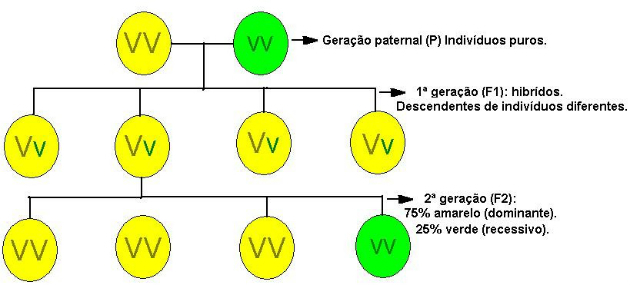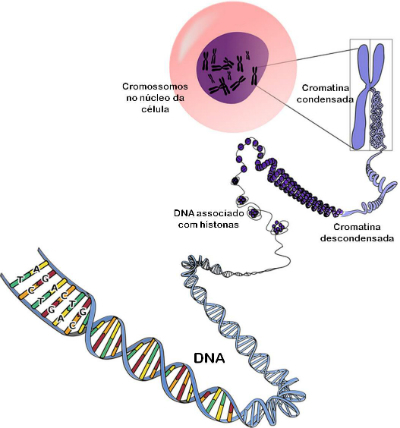The ocelot is a feline family mammal. Native to America, it is considered the third largest feline on the continent, after the jaguar and the puma. Its scientific name is Leopardus sparrow.
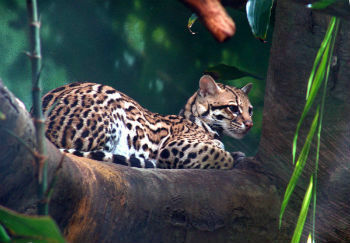 Ocelot photo on tree
Ocelot photo on tree
Ocelot Characteristics
Habitat: Where do you live?
Ocelots can be found in different habitats such as tropical, subtropical, savanna and mangrove forests.
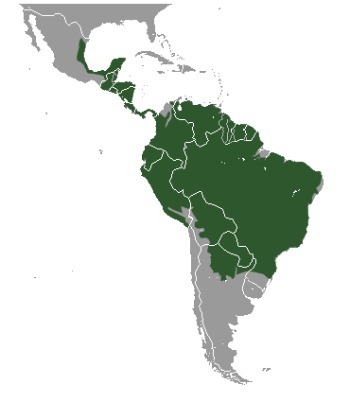 Map of the geographic distribution of the Ocelot in America
Map of the geographic distribution of the Ocelot in America
habits
like most cats, the ocelot is a nocturnal animal. That is, she sleeps during the day and goes hunting at night. Although it can be found hunting by day.
 Photo of ocelot sleeping during the day
Photo of ocelot sleeping during the day
It is a solitary and territorial animal. Its territory is marked by feces or urine. She has great ability, including climbing trees. In some cases, we can see ocelots swimming to hunt fish.
Males fight for females, which can lead to several fights between them. Note that one of the times they are found in pairs is during the mating season.
body structure
The Ocelot is a medium feline, that is, it is smaller than jaguars and larger than cats. Its body size varies from 70 to 100 cm in length.
They have a shorter tail than other cats, with an approximate length between 25 to 40 cm. Thus, with the tail they can measure up to 1.40 meters. In relation to height, they are about 50 cm.
Ocelots generally weigh between 7 and 16 kg. Males are usually larger and heavier than females.
 Ocelot photo
Ocelot photo
On the front legs they have five clawed toes, and on the hind legs, four clawed toes. Their nails are very sharp as they are constantly sharpening in trees.
The coat of these animals is short, soft and shiny, with color that can vary between yellow, black, gray, brown and white. They have spots and stripes all over the body, and on the belly they are lighter.
It has a great resemblance to the jaguar, although it is smaller. Therefore, the Ocelot is often confused with this other feline.
Want to know more? Read too:
- Jaguar
- Lion
food
The Ocelot is a carnivorous and predatory animal that is at the top of the food chain.
It feeds on the flesh of other smaller animals, for example: mammals, fish, reptiles, rodents, birds, among others. They have very sharp teeth that make it easier to digest their food.
Learn more about Carnivorous Animals.
reproduction
The ocelot is a mammalian animal. Female sexual maturity occurs between 16 and 18 months of age (about 1 year and a half).
Males, on the other hand, reach sexual maturity shortly after females, at approximately 2 years of age. Females' heat lasts about a week, at which time they mate.
When pregnant, females usually give birth to only one offspring. There are rarer cases where more than one (maximum four) can be born.
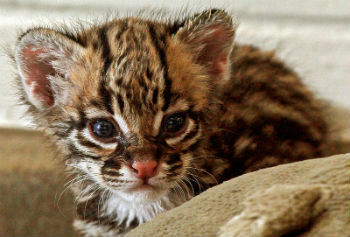 Ocelot puppy photo
Ocelot puppy photo
Gestation is approximately 80 days and they can breastfeed the baby up to 9 months. Females take care of their young alone and teach them to hunt.
Know all about the Mammals.
Extinction Ocelot
Unfortunately, the ocelot has been on the list of endangered animals since the late 1980s.
Depending on location, the species is in the “Least Concern”, “Vulnerable” and “Critically Endangered” categories according to the International Union for Conservation of Nature (IUCN). There are places where it was already extinct (North America).
One of the main causes of the extinction of ocelots is the great commercial interest in their fur, often related to the animal trafficking. Currently, the fur trade is considered illegal.
 Ocelot Skin
Ocelot Skin
In addition, the loss of habitat resulting from the exploitation of natural resources and the development of agriculture and livestock, has reduced the population of the species.
Researches show that in the last decades the number of ocelots has been decreasing. For this reason, programs aimed at the conservation of the species already raise these animals in captivity.
Learn more about the topic by reading the articles:
- Endangered species
- Endangered Animals in Brazil
- Endangered Animals in the Amazon Forest
- Endangered Animals in the World
- Extinct animals
Curiosities
- In captivity the ocelot can live up to 20 years, while in the wild the average lifespan is 10 years.
- In Brazil, the ocelot is found in several biomes: Amazon, Atlantic Forest, Cerrado, Pantanal and Pampas. In some parts of the country, it is known by the names maracajá-açu or gato-do-mato.
- The Ocelot had great importance in the mythology of some pre-Columbian peoples, for example, the Incas and Aztecs.
- For a long time, she was domesticated. Salvador Dali, the famous Catalan painter of surrealism, had a pet who was nicknamed “Babou”.
- Even today, the ocelot is considered an exotic pet, and for this reason, the smuggling of the species takes place in several places, including Brazil.
- Although it is considered docile, if it feels threatened, the ocelot can attack people.
Do you want to know more about the animals that inhabit our country? Read the article: Brazilian fauna.

